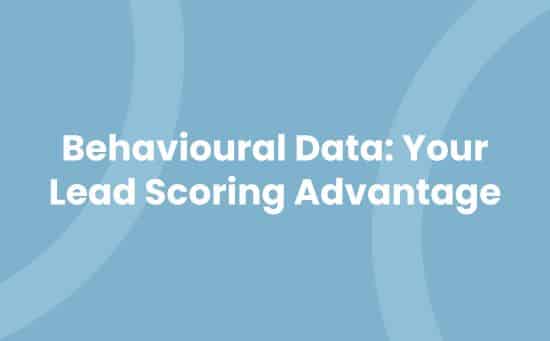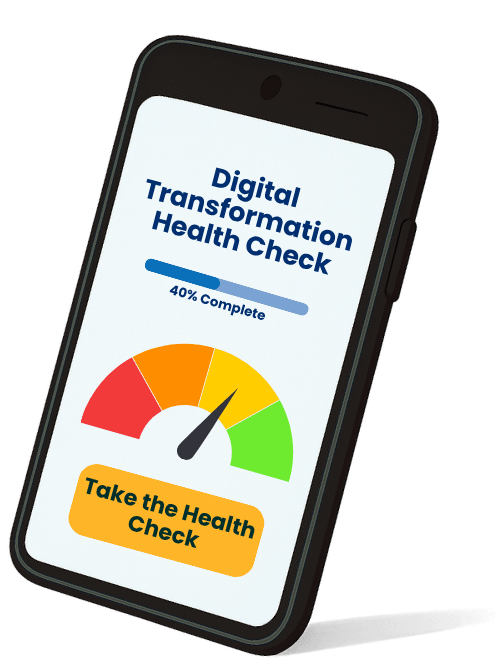Key Takeaways
- Behavioural data transforms prospect interactions into measurable insights, enabling precise lead scoring through digital footprint analysis
- Key metrics to track include page views, content downloads, form submissions, email engagement, and social media interactions, each weighted differently for scoring accuracy
- Website interaction signals, particularly high-value page visits and download patterns, provide crucial indicators of purchase intent and lead qualification
- Email engagement patterns, including open rates and response times, offer valuable insights into prospect interest levels and buying readiness
- Implementing a robust lead scoring system requires proper data collection methods, regular testing, and continuous optimisation to maintain accuracy and effectiveness
Struggling to identify your hottest leads? Behavioural data for lead scoring transforms your guesswork into a precise science. By tracking how prospects interact with your content emails and website you’ll unlock valuable insights that reveal their true buying intent.
Think of lead scoring like a digital detective piecing together clues from your prospects’ online footprints. Every webpage visit email click and content download tells a story about their interests and readiness to buy. When you harness this behavioural data effectively you’ll prioritise your sales efforts focus on qualified leads and boost conversion rates dramatically.
Your sales team needn’t waste precious time chasing lukewarm prospects. With a robust lead scoring system powered by behavioural data you’ll identify high-value opportunities early and engage them at exactly the right moment. Let’s explore how this game-changing approach can revolutionise your sales process.
Understanding Behavioural Data and Lead Scoring
Behavioural data transforms raw prospect interactions into measurable insights for lead scoring. Digital footprints create patterns that indicate purchase readiness when properly analysed.
Key Behavioural Metrics to Track
Digital engagement metrics reveal authentic prospect interest through quantifiable actions. Here’s what to monitor:
- Page Views: Track specific product pages visited frequency duration patterns
- Content Downloads: Monitor whitepaper ebook technical document acquisition rates
- Form Submissions: Record demo request contact preference newsletter signup completions
- Email Engagement: Measure open rates click-through rates reply frequencies
- Time on Site: Calculate average session duration bounce rates return visits
- Social Media: Track shares comments profile views connection requests
| Metric Type | Impact Weight | Scoring Range |
|---|---|---|
| Page Views | Medium | 5-15 points |
| Downloads | High | 10-25 points |
| Forms | Very High | 15-30 points |
| Emails | Medium | 5-20 points |
The Value of Digital Body Language
Digital body language communicates prospect intent through online behavioural patterns. These signals indicate:
- Research Phase: Multiple visits to pricing comparison solution pages
- Budget Authority: Downloads of ROI calculators financial documents
- Timeline Indicators: Increased activity frequency urgent support requests
- Competitive Analysis: Views of competitor comparison content
- Technical Validation: Access to API documentation implementation guides
Marketing Automation Platform integration enhances tracking capabilities while Lead Scoring Best Practices provide implementation frameworks.
These digital interactions paint a clear picture of prospect engagement levels purchase readiness stages. Monitoring patterns across channels creates comprehensive scoring models that accurately predict sales opportunities.
Website Interaction Signals
Website interaction signals reveal prospects’ digital engagement patterns, providing measurable insights into their purchase intent. These behavioural indicators track specific actions taken on your website, enabling accurate lead scoring based on real-time engagement data.
Page Views and Time on Site
Page views and time on site metrics demonstrate clear purchase intent through quantifiable engagement patterns. Here’s what these metrics reveal:
- Visit Duration: Prospects spending 5+ minutes on your website display heightened interest in your offerings
- Page Depth: Visitors exploring 3+ pages per session indicate active research behaviour
- Return Frequency: Multiple site visits within 7 days signal strong engagement
- High-Value Pages: Interactions with pricing [internal link to pricing page] and product pages carry 2x more scoring weight
- Navigation Patterns: Sequential page views from overview to detailed product information demonstrate systematic evaluation
[Link to relevant case study on website analytics]
Content Downloads and Form Submissions
Content engagement metrics capture explicit interest through measurable actions:
- Resource Downloads: Technical whitepapers downloaded indicate solution research phase
- Form Completions: Contact form submissions carry the highest lead score value
- Document Types:
| Content Type | Lead Score Value |
|————–|——————|
| Product Specs | 15 points |
| Case Studies | 10 points |
| Whitepapers | 8 points |
| Blogs | 5 points | - Registration Details: Complete form submissions with business email addresses indicate qualified leads
- Download Sequence: Multiple downloads across different content types show comprehensive evaluation
[Link to resource library]
Remember: Track these interactions through your CRM system to maintain accurate scoring records.
Email Engagement Patterns
Email engagement metrics reveal prospects’ interest levels through their interactions with email communications. These behavioural patterns provide quantifiable data points for lead scoring systems.
Open Rates and Click-Through Behaviour
Email open rates indicate a prospect’s initial interest in your communications. Each email open adds points to a lead’s score, with higher frequencies signalling stronger engagement. Studies show that leads who consistently open 70% or more of emails demonstrate significant buying intent[^1].
Click-through behaviour offers deeper insights into engagement levels:
- Multiple link clicks within a single email earn higher scores
- Clicking product-specific links indicates targeted interest
- Repeated clicks across different emails show sustained engagement
- Downloading attachments or resources reflects active research
The combination of open rates and click patterns creates a comprehensive engagement profile. For example, a lead who opens 8 out of 10 emails and clicks through to pricing pages receives a higher score than one who simply opens emails without further interaction.
Response Time Analytics
Response time tracking measures how quickly leads engage with your emails:
- Immediate opens (within 1 hour) indicate high priority
- Same-day responses suggest active buying cycles
- Reply speed correlates with purchase readiness
- Consistent rapid engagement patterns earn premium scores
Email reply analysis provides additional scoring factors:
- Direct questions about products or services
- Requests for demonstrations or consultations
- Detailed technical queries
- Budget discussions
[Link: Email Marketing Best Practices – Avrion CRM Solutions]
[Link: Understanding Lead Behaviour – Marketing Automation Guide]
Social Media Activity Indicators
Social media interactions provide quantifiable data points for lead scoring systems. Digital engagement across social platforms reveals prospect interest levels through measurable actions such as likes, comments shares.
Social Platform Interactions
Tracking social media interactions enhances lead scoring accuracy by measuring specific engagement types. Each interaction carries a distinct value in the scoring matrix:
- Content likes indicate basic interest (1-2 points)
- Comments demonstrate active engagement (3-4 points)
- Direct messages show strong intent (4-5 points)
- Profile visits signal research behaviour (2-3 points)
Engagement rates calculate the ratio of interactions to follower count, providing context for scoring:
| Engagement Type | Score Impact | Priority Level |
|---|---|---|
| Low (<1%) | 1 point | Monitor |
| Medium (1-3%) | 2 points | Follow-up |
| High (>3%) | 3 points | Priority |
Learn more about social media engagement metrics
Social Sharing Patterns
Analysis of social sharing behaviour reveals deeper engagement levels through specific actions:
- Content reshares indicate value recognition
- Frequency of interactions shows consistent interest
- Cross-platform engagement demonstrates broader commitment
- Tagged mentions reflect brand advocacy
Platform-specific sharing metrics contribute unique scoring elements:
| Platform | Share Type | Score Value |
|---|---|---|
| Professional | 5 points | |
| Quick Response | 3 points | |
| Community | 2 points |
Regular monitoring of these patterns through social media analytics tools enables precise lead qualification based on social engagement depth.
Converting Behavioural Data into Lead Scores
Behavioural data transforms prospect interactions into quantifiable lead scores through systematic evaluation of digital engagement patterns. The conversion process requires a structured approach to accurately measure sales readiness.
Creating a Scoring Model
Lead scoring models quantify prospect interactions by assigning point values to specific behavioural actions. Email interactions earn different scores based on engagement levels:
- Basic Actions:
- Email opens: 1-2 points
- Single page visits: 1-3 points
- Social media likes: 1 point
- High-Value Activities:
- Product page visits: 5-10 points
- Content downloads: 8-12 points
- Webinar attendance: 15 points
A 30-day rolling calculation ensures scores remain current by automatically adjusting for recent activities. Points decay over time, maintaining score relevance [source: avrion.co.uk/lead-scoring].
Setting Threshold Values
Threshold values establish boundaries between lead categories based on cumulative scoring totals. The scoring matrix categorises leads into distinct segments:
| Lead Category | Score Range | Action Required |
|---|---|---|
| Cold | 0-30 | Nurture |
| Warm | 31-70 | Monitor |
| Hot | 71-100 | Contact |
Digital intent signals trigger automatic lead status changes when prospects reach defined thresholds. Key purchasing indicators include:
- Multiple product page visits within 24 hours
- Technical documentation downloads
- Direct contact form submissions
- Immediate email response patterns
Regular threshold value recalibration optimises lead qualification accuracy based on conversion data analysis [source: avrion.co.uk/lead-management].
Best Practices for Implementation
Lead scoring implementation requires systematic tracking of prospect interactions across digital touchpoints to generate accurate engagement scores. The quality of behavioural data directly impacts the effectiveness of lead qualification processes.
Data Collection Methods
Carry out tracking mechanisms across multiple digital channels to capture comprehensive behavioural data. Configure your CRM system to monitor website interactions including page views, content downloads [avrion.co.uk/blog/crm-implementation] time spent on key pages. Email tracking parameters measure open rates click-through rates response times to gauge engagement levels. Social media analytics tools track interactions such as likes comments shares profile visits.
Integrate marketing automation platforms to streamline data collection processes:
- Install website tracking codes on all pages
- Set up event tracking for specific user actions
- Configure form submission tracking
- Enable email engagement monitoring
- Deploy social media tracking pixels
Create standardised data collection protocols:
- Define consistent naming conventions
- Establish tracking parameters
- Document data collection methods
- Set up regular data validation checks
- Carry out data privacy compliance measures
Testing and Optimisation
Regular testing enhances the accuracy of lead scoring models through iterative refinement. A/B testing different scoring weights reveals which behavioural indicators correlate strongest with conversions [avrion.co.uk/services/crm-consulting]. Monitor key performance metrics:
Score correlation analysis:
- Conversion rates by score range
- Sales closure rates
- Lead qualification accuracy
- Response time metrics
- Revenue attribution
Optimisation techniques:
- Adjust scoring weights based on data
- Remove irrelevant scoring criteria
- Add new behavioural indicators
- Update scoring thresholds
- Recalibrate decay rules
- Monthly scoring audits
- Quarterly threshold reviews
- Conversion trend analysis
- Sales feedback integration
- ROI measurement
Conclusion
Behavioural data holds the key to transforming your lead scoring strategy from guesswork into a data-driven powerhouse. By monitoring digital body language across websites emails and social platforms you’ll gain deeper insights into your prospects’ buying intent.
Remember, successful lead scoring isn’t just about collecting data – it’s about understanding what each interaction means for your sales pipeline. With the right scoring model and regular optimisation you can identify and prioritise high-value opportunities more effectively than ever before.
Take action now to carry out these behavioural tracking strategies and watch your conversion rates soar. Your sales team will thank you for providing them with qualified leads that are genuinely ready to engage.
Frequently Asked Questions
What is behavioural data in lead scoring?
Behavioural data refers to the digital footprints prospects leave whilst interacting with your content, website, emails, and social media. It includes metrics like page views, time spent on site, content downloads, email engagement, and social media interactions. This data helps measure prospects’ buying intent and sales readiness.
How does lead scoring improve the sales process?
Lead scoring helps sales teams prioritise their efforts by identifying the most promising prospects based on their digital interactions. By assigning point values to specific behaviours, companies can focus on leads showing genuine buying intent, ultimately improving conversion rates and optimising resource allocation.
What are the key metrics tracked in lead scoring?
The main metrics include website page views, time on site, content downloads, form submissions, email open rates, click-through rates, and social media engagement. Each metric is assigned a weighted score based on its importance in indicating purchase intent, helping create a comprehensive view of prospect interest.
How often should lead scores be updated?
Lead scores should be calculated on a 30-day rolling basis, with points decaying over time to maintain relevance. Regular recalibration of threshold values is essential, typically through monthly audits and quarterly reviews, to ensure scoring accuracy based on actual conversion data.
What role does social media play in lead scoring?
Social media activities provide valuable insights into prospect engagement through measurable actions like likes, comments, shares, and direct messages. Each interaction type carries different scoring weights, helping categorise leads into priority levels based on their social media engagement depth.
How are lead scoring thresholds determined?
Thresholds are established by analysing cumulative scoring totals that categorise leads as cold, warm, or hot. These values are based on historical conversion data and key purchasing indicators, such as multiple product page visits and prompt email responses. Regular adjustment ensures optimal lead qualification accuracy.
What are the best practices for implementing lead scoring?
Best practices include systematic tracking of digital interactions, proper CRM configuration, integration with marketing automation platforms, and establishing standardised data collection protocols. Regular testing, monitoring of performance metrics, and compliance with privacy regulations are also essential.
How is email engagement measured in lead scoring?
Email engagement is measured through open rates, click-through behaviour, and response times. Immediate opens and rapid replies indicate high priority leads, while multiple link clicks suggest stronger engagement. These metrics contribute to creating a comprehensive engagement profile for each prospect.



